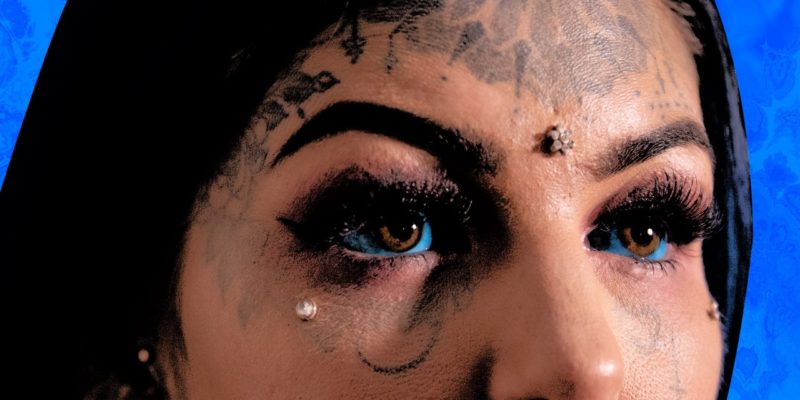The Risks of Eye Tattoos, According to Body Modification Artist Who Invented Them
In 2017, we reported on Canadian model Catt Gallinger, the victim of an eye tattoo (also known as a sclera tattoo) gone wrong — those viral snapshots of her eye crying purple tears had people feeling shaken. To be clear, this isn’t a tattoo in the traditional sense. Instead, an artist, in this case, injects a tiny amount of ink under the conjunctiva (the clear membrane covering the front of the eye) and over the sclera (the whites of the eye).
The procedure was developed about 10 years ago by body-modification expert Luna Cobra and the late Shannon Larratt, who founded BME, the first extensive body modification e-zine. Cobra tells Allure he initially performed it “a few different ways” on Larratt and two other subjects. “One method worked best, so I spent the next two years refining it,” says Cobra, who has gone on to safely tattoo hundreds of eyeballs.
Still, just because he dreamed up eyeball tattoos doesn’t mean he thinks they’re a good idea (to note, neither Allure nor the American Academy of Opthalmology recommend or endorse sclera tattoos). In fact, he tries to talk clients out of it. “To be honest, every person that contacts me about eyeball tattoos gets the same letter back,” he says. “I explain they really should invest in quality contacts and wear those for a long time.”
If they insist on the real thing? “I tell them if you think there’s even a possibility you might not want this in the future, please don’t get it done because you can’t reverse it,” he says.
After refining and perfecting the process, Cobra’s more comfortable performing sclera tattoos now than he was at first. “For the first five years, doing sclera tattoos really bothered me,” he recalls. “I was really worried about the clients — I’d call them for days to make sure they were okay.”
That’s because the medical risks are pretty scary: Once another substance is injected into the layers of the eye, it can cause chronic inflammation of the wall of the eye, says Kendall E. Donaldson, an associate professor of ophthalmology at the Bascom Palmer Eye Institute of the University of Miami Miller School of Medicine.
That not’s the worst of it, as New York City-based ophthalmologist Ilyse Haberman adds. “If the ink is not injected into the right place, the needle can perforate the eye and the ink can be injected into the eyeball itself,” she explains. “This can lead to a retinal detachment, infection, and permanent damage to the cells inside the eye that allow you to see.” According to her, someone could even lose their sight or their entire eye permanently if the job isn’t done with the utmost care.








